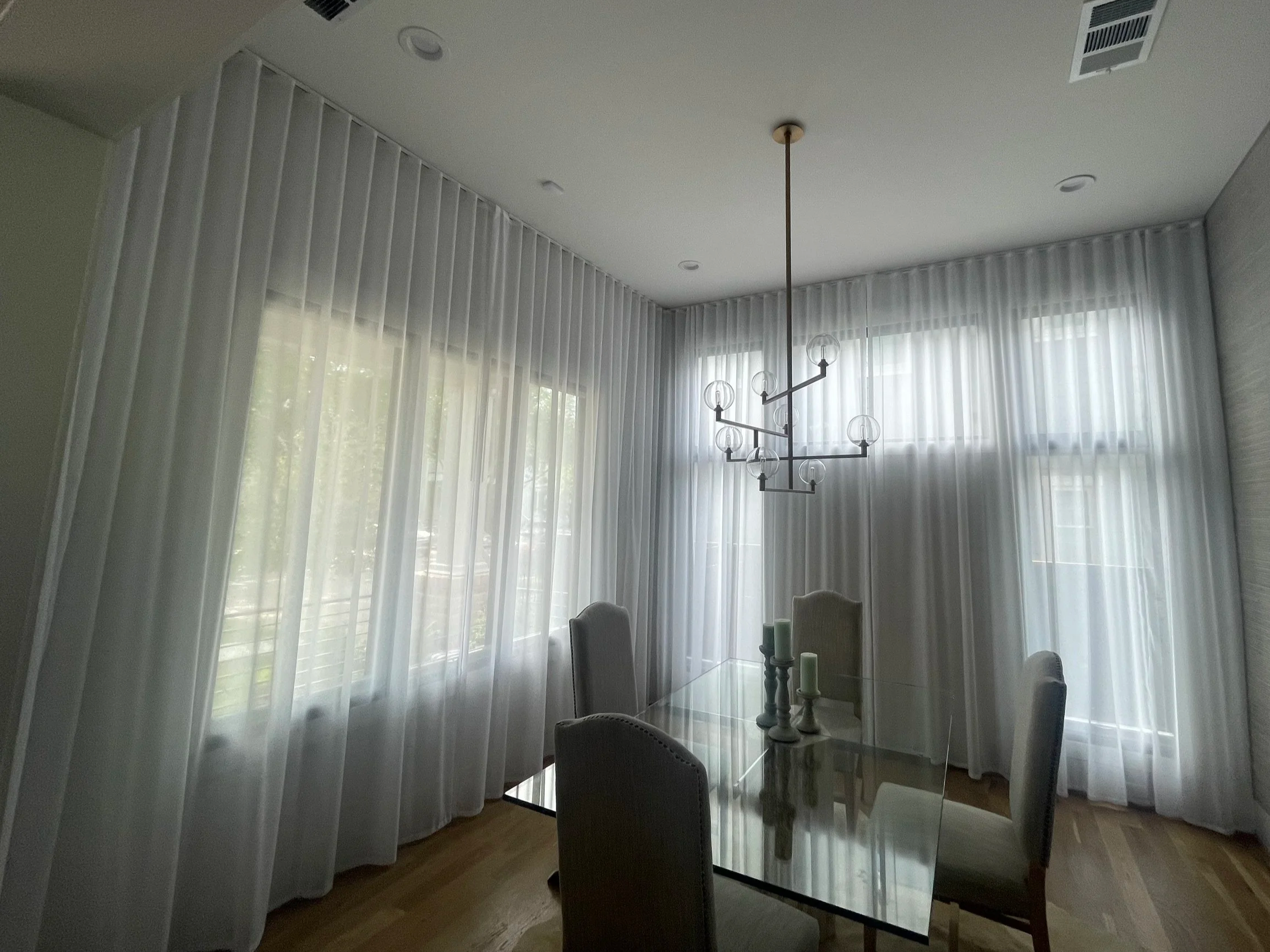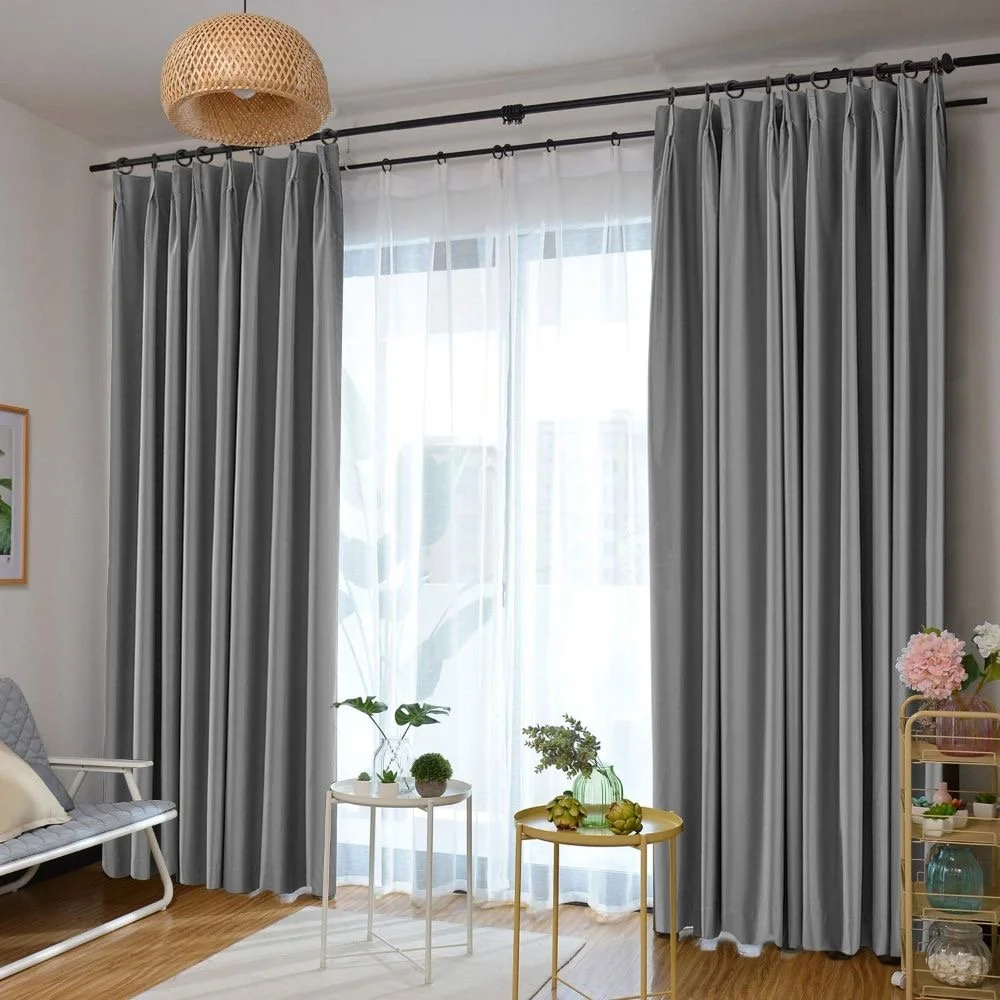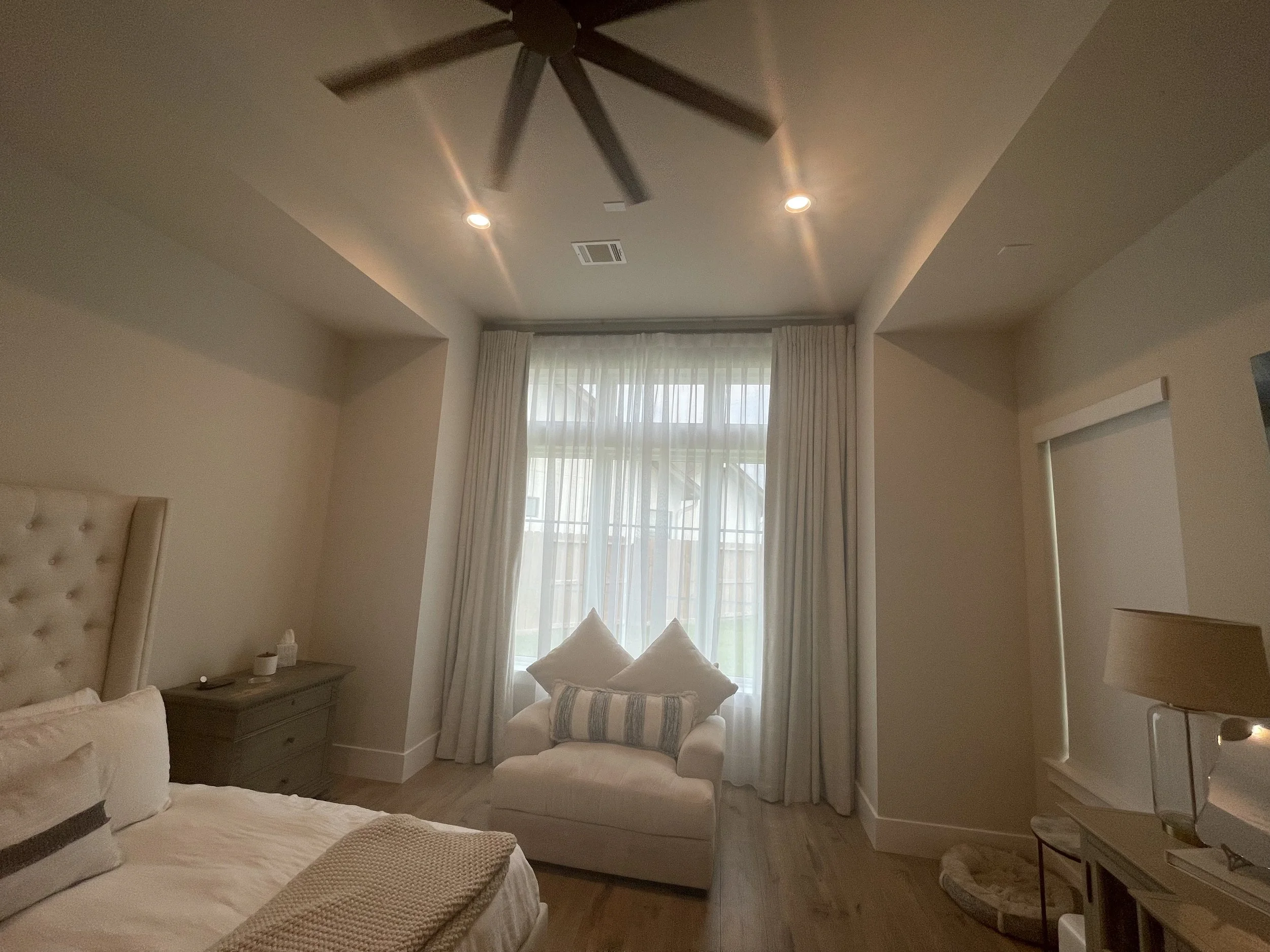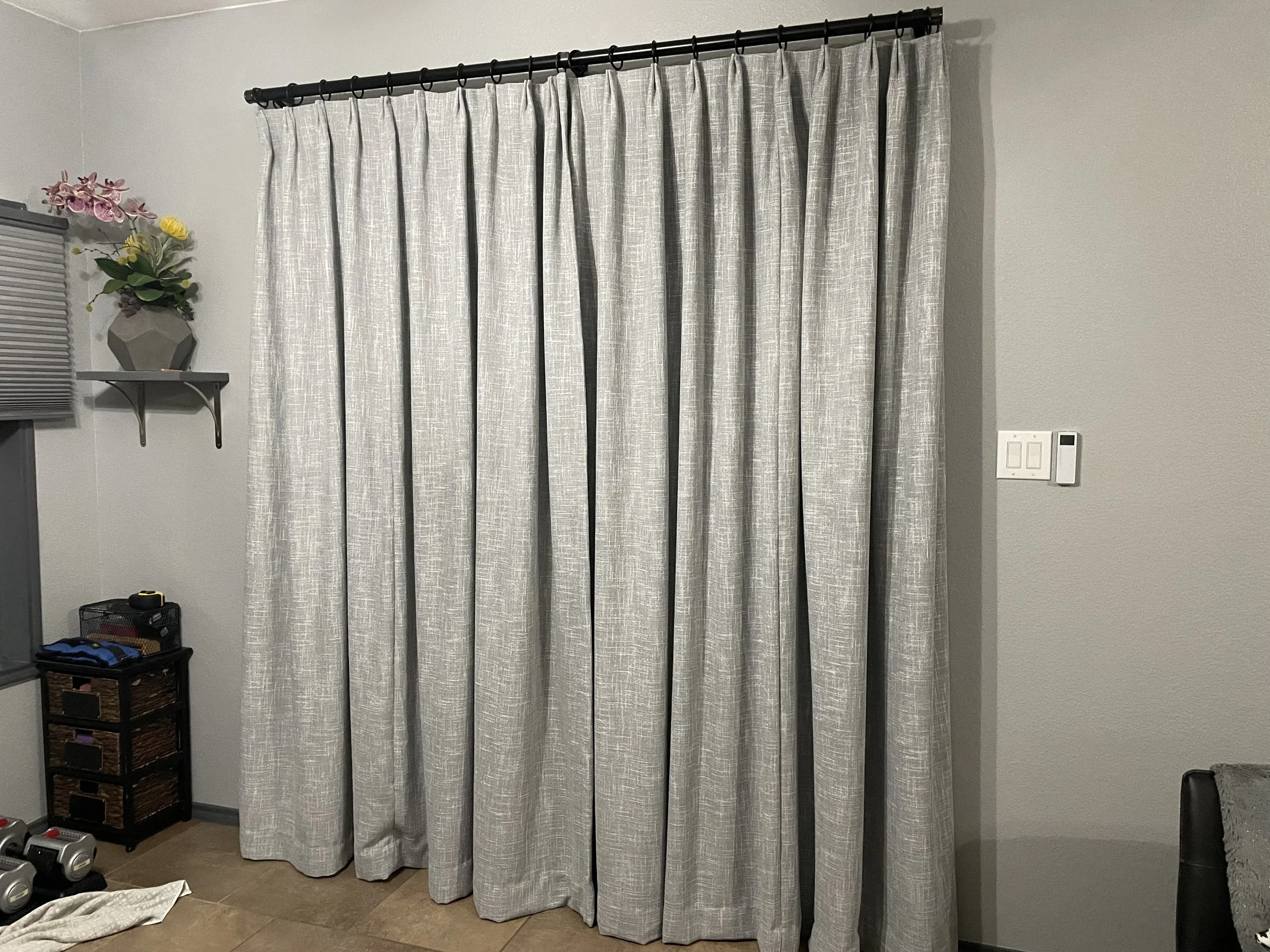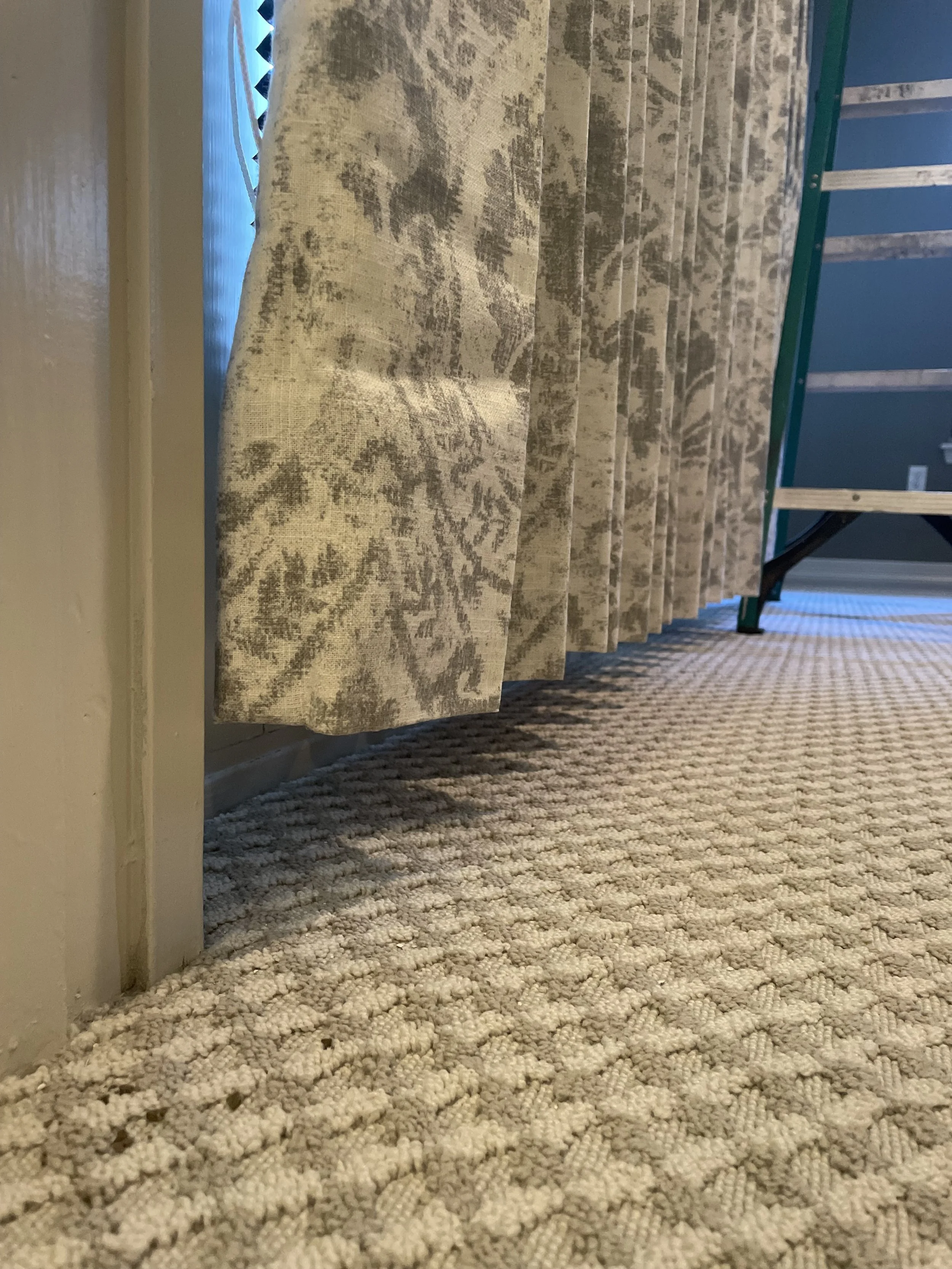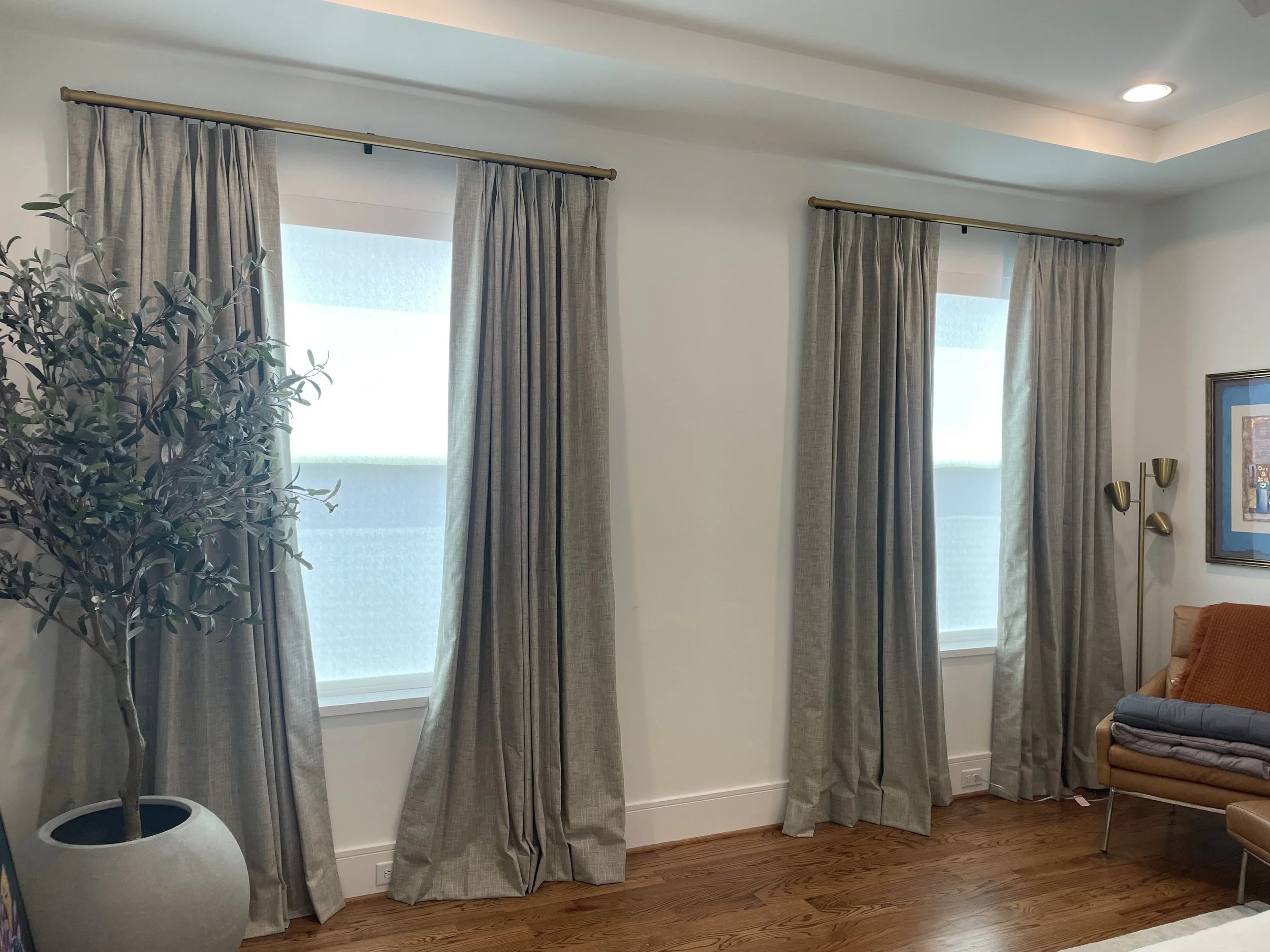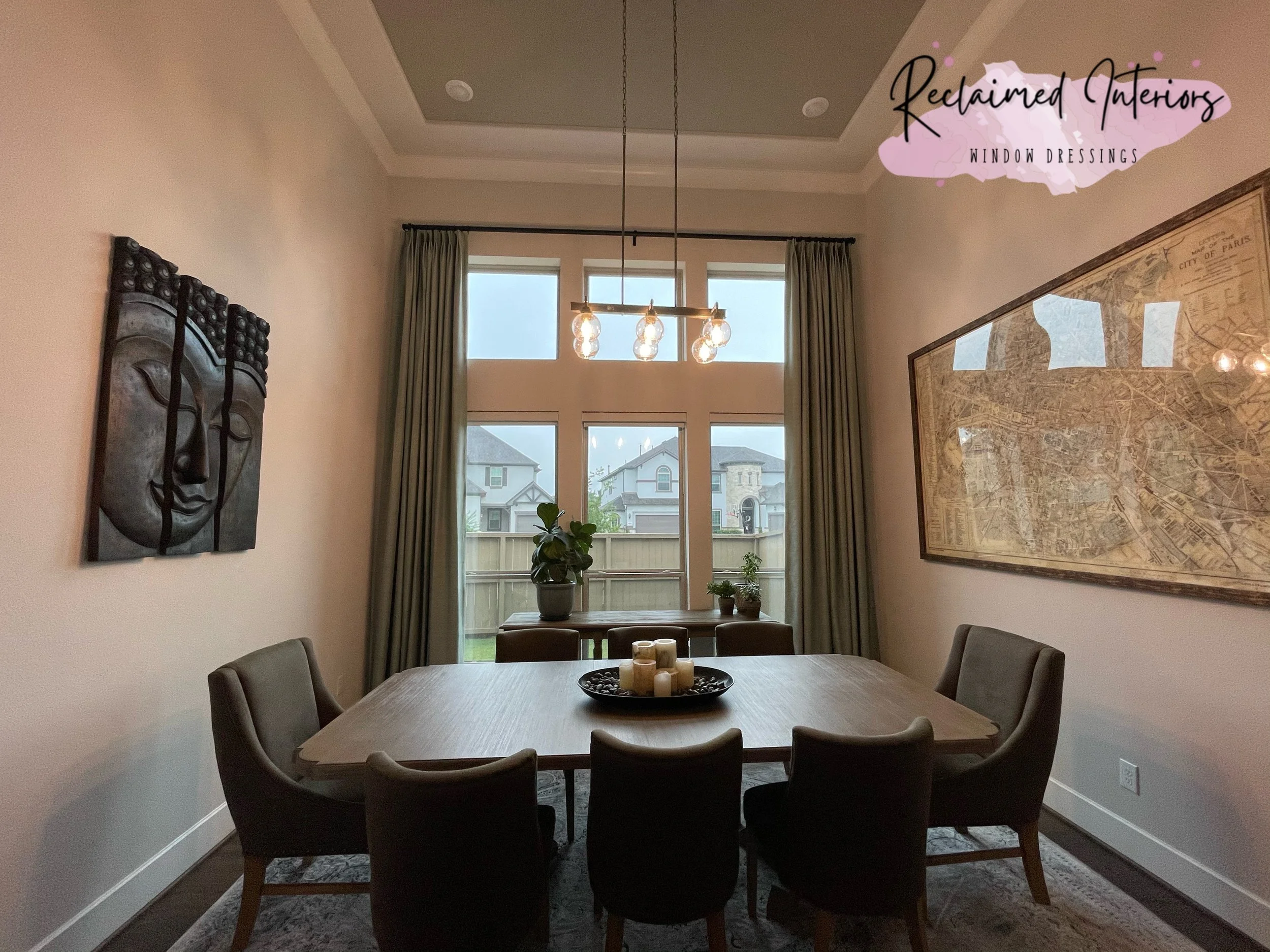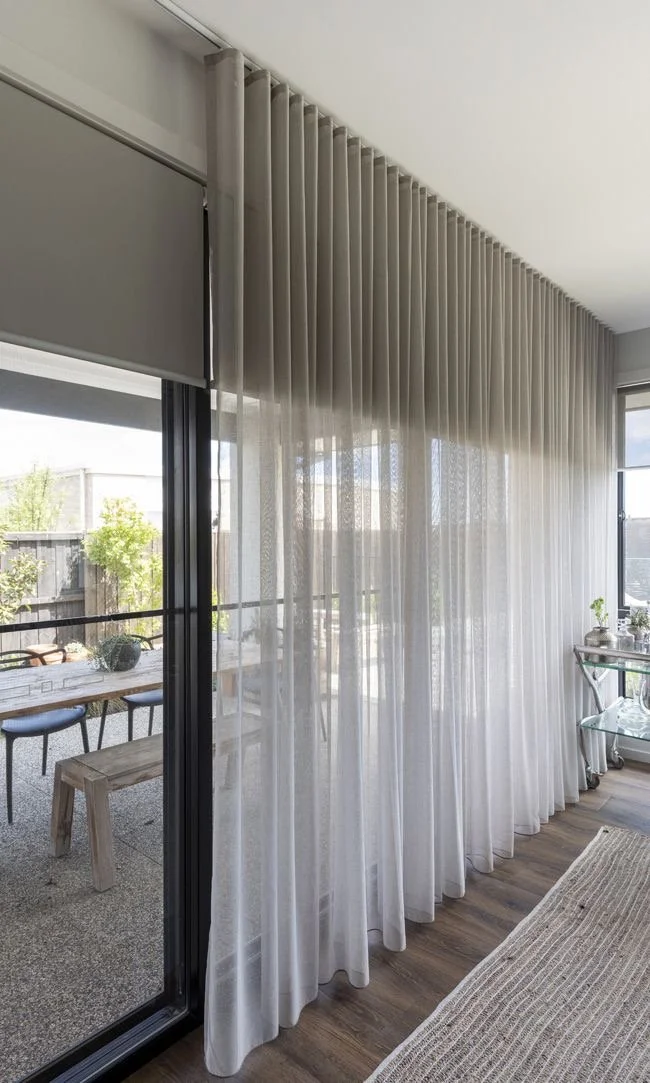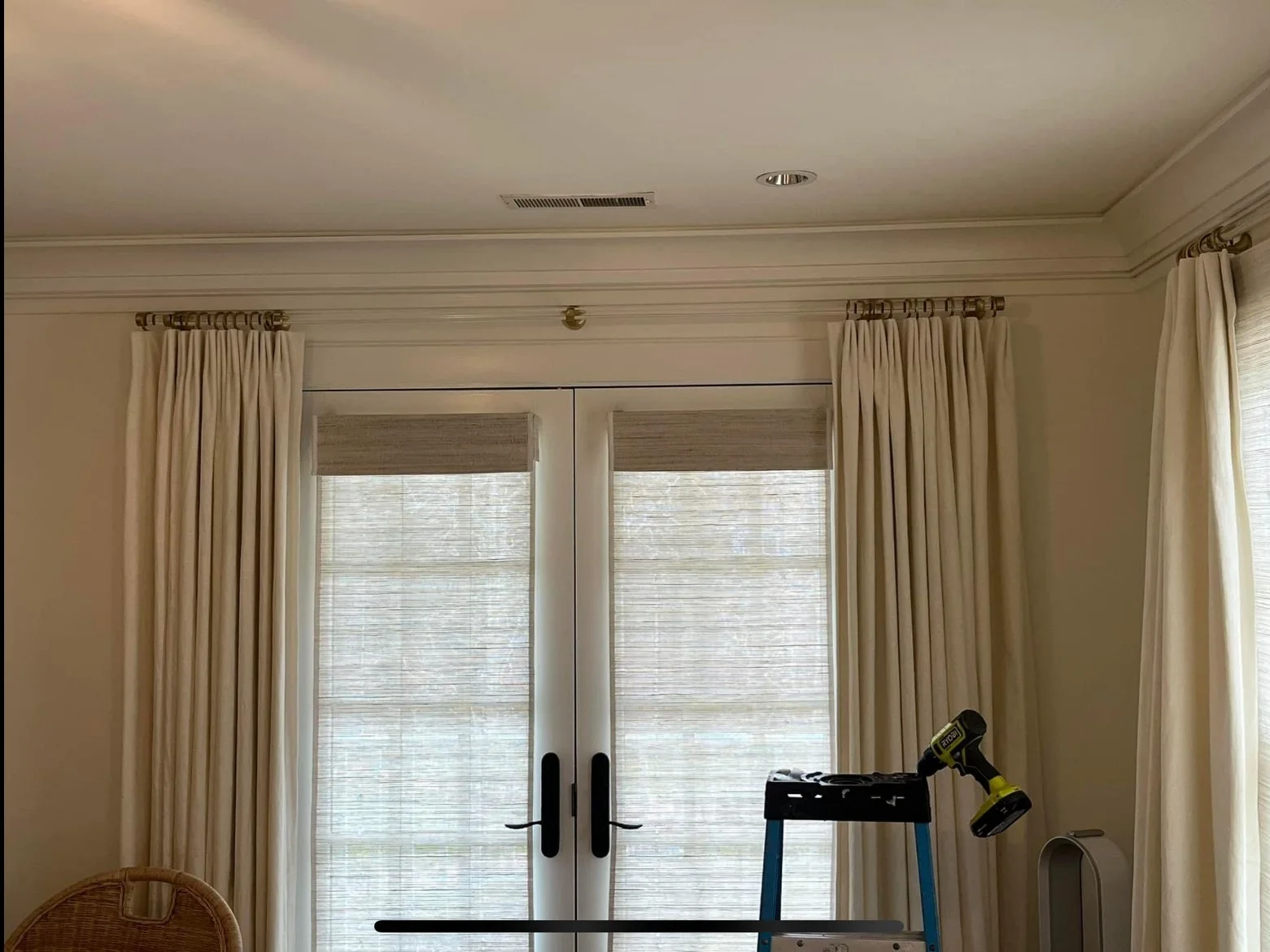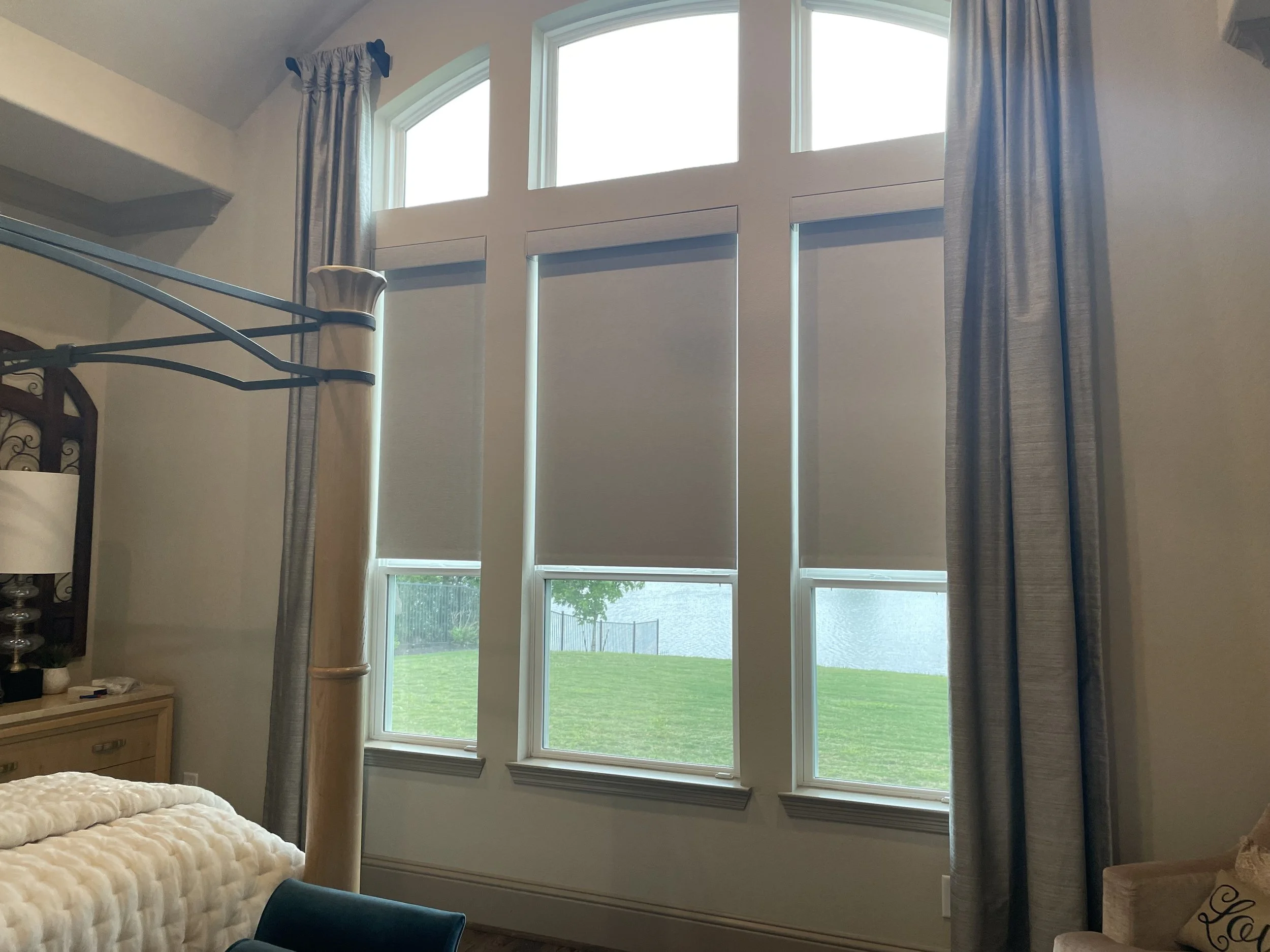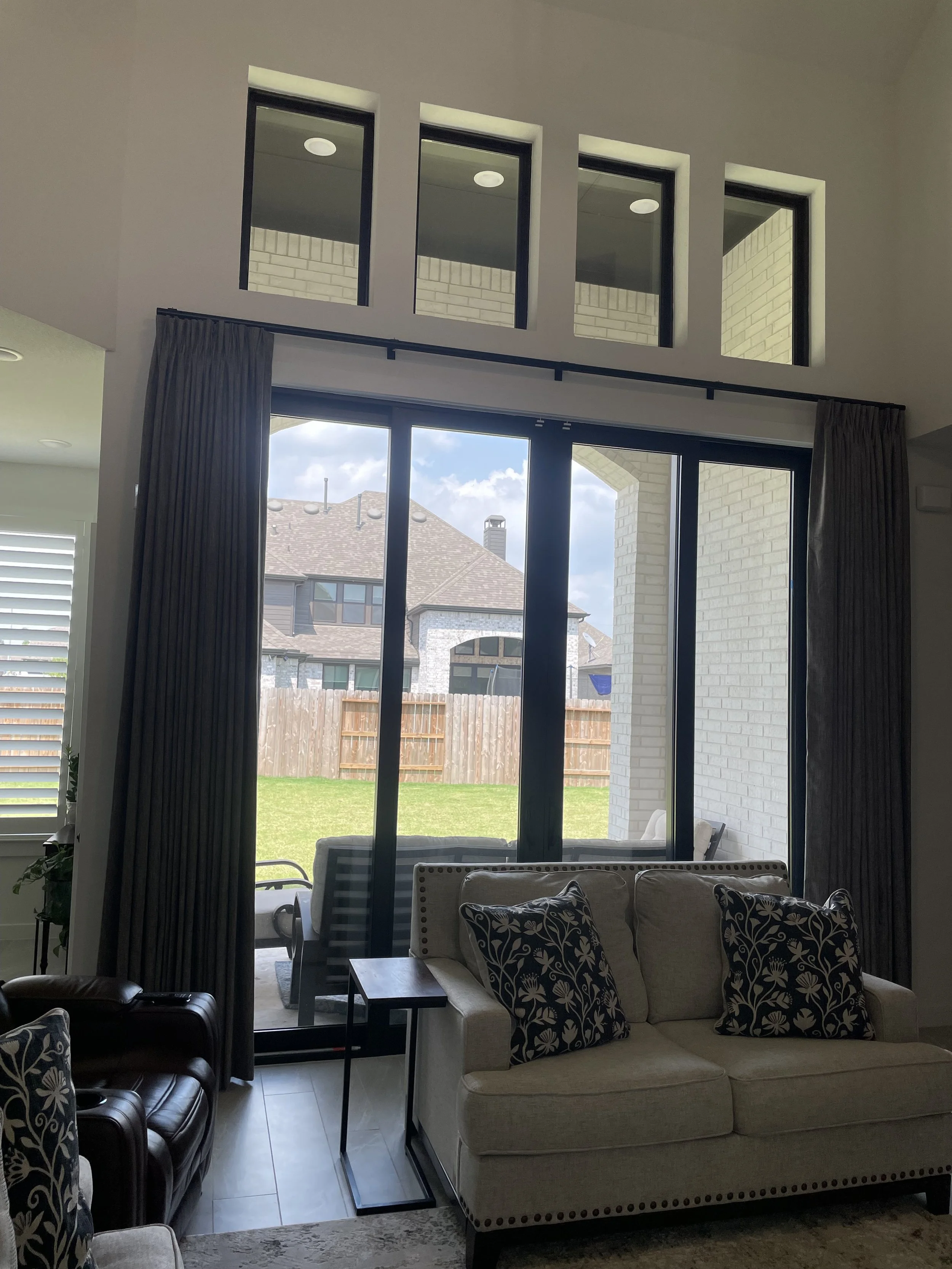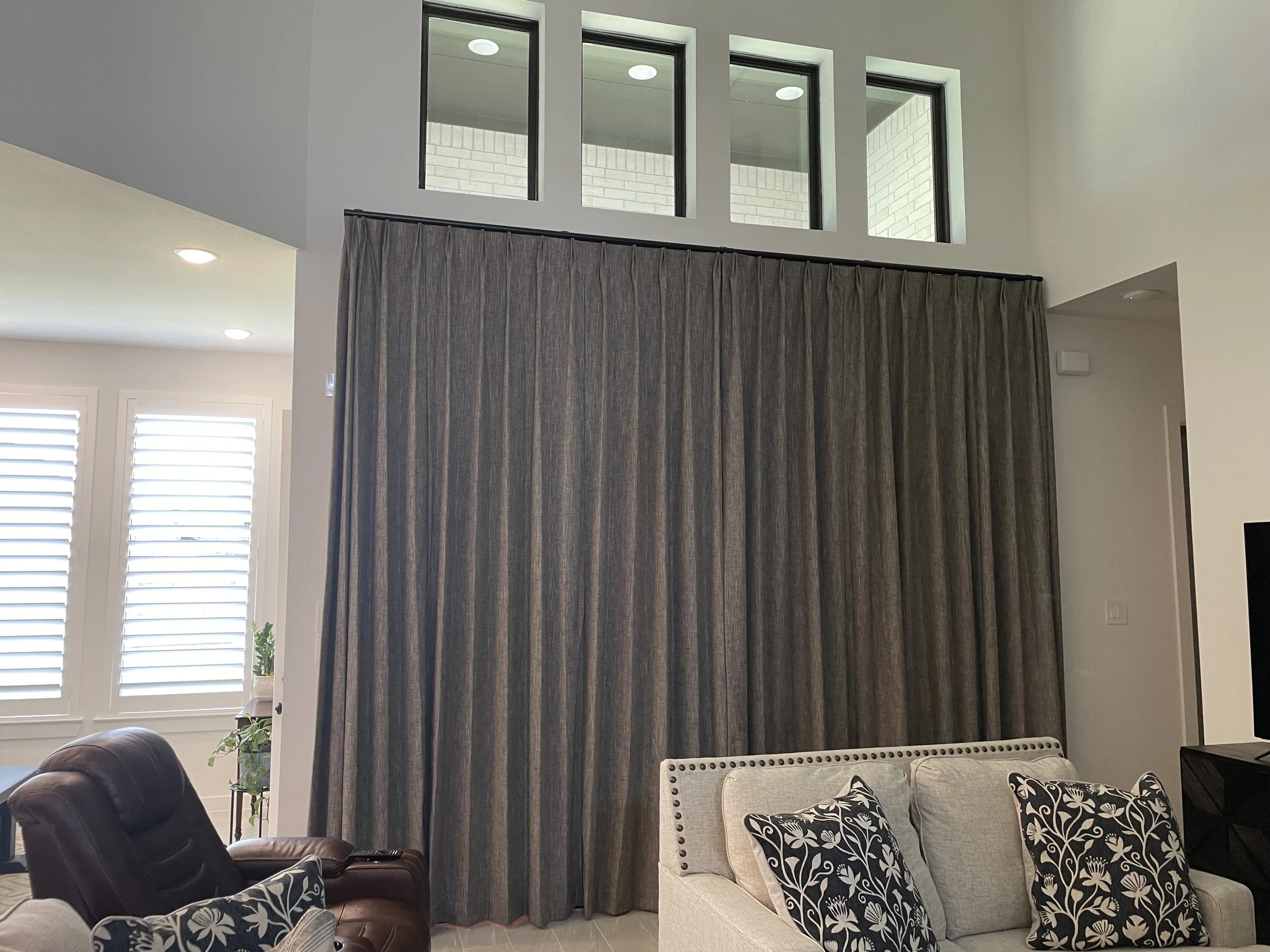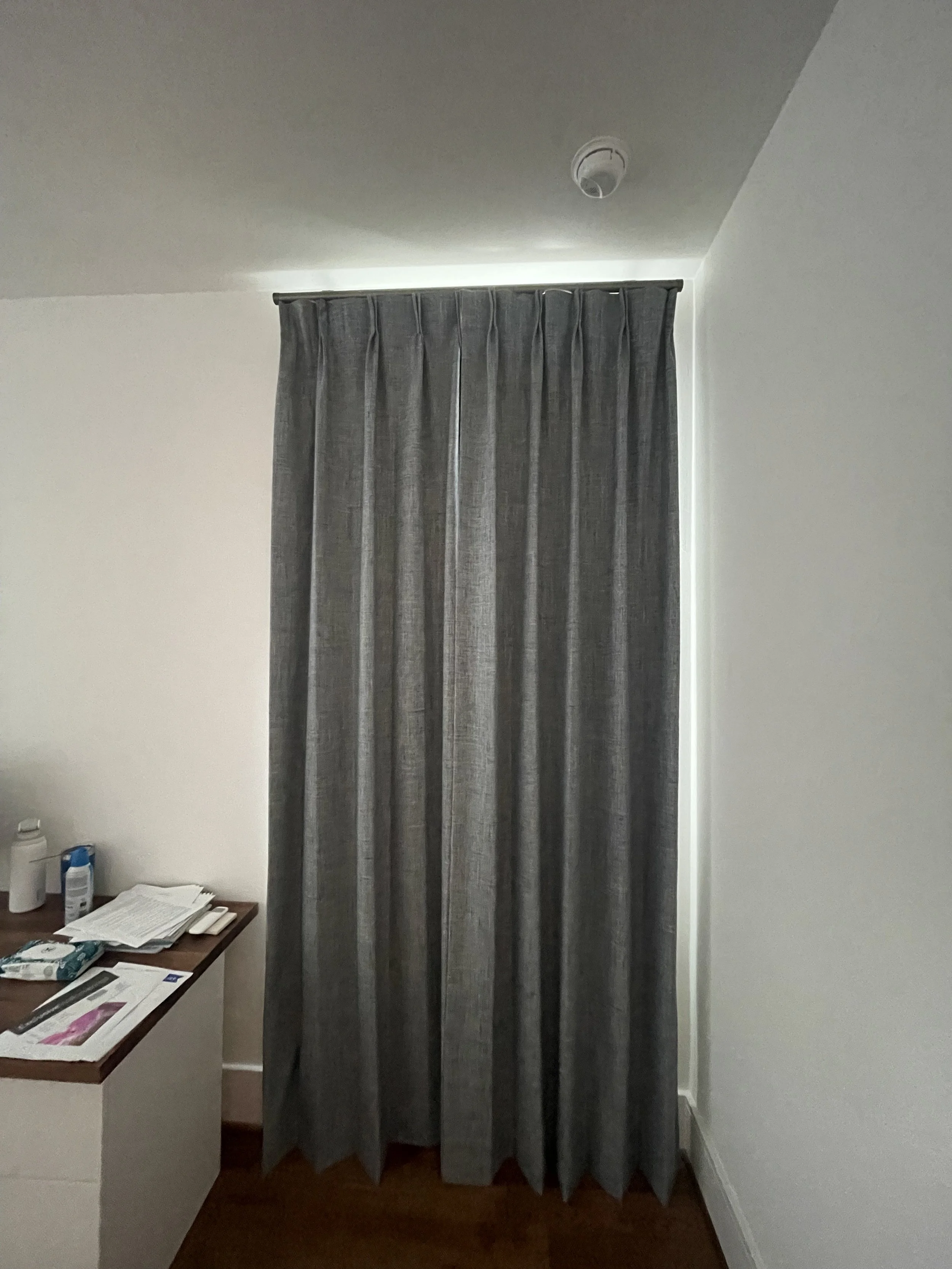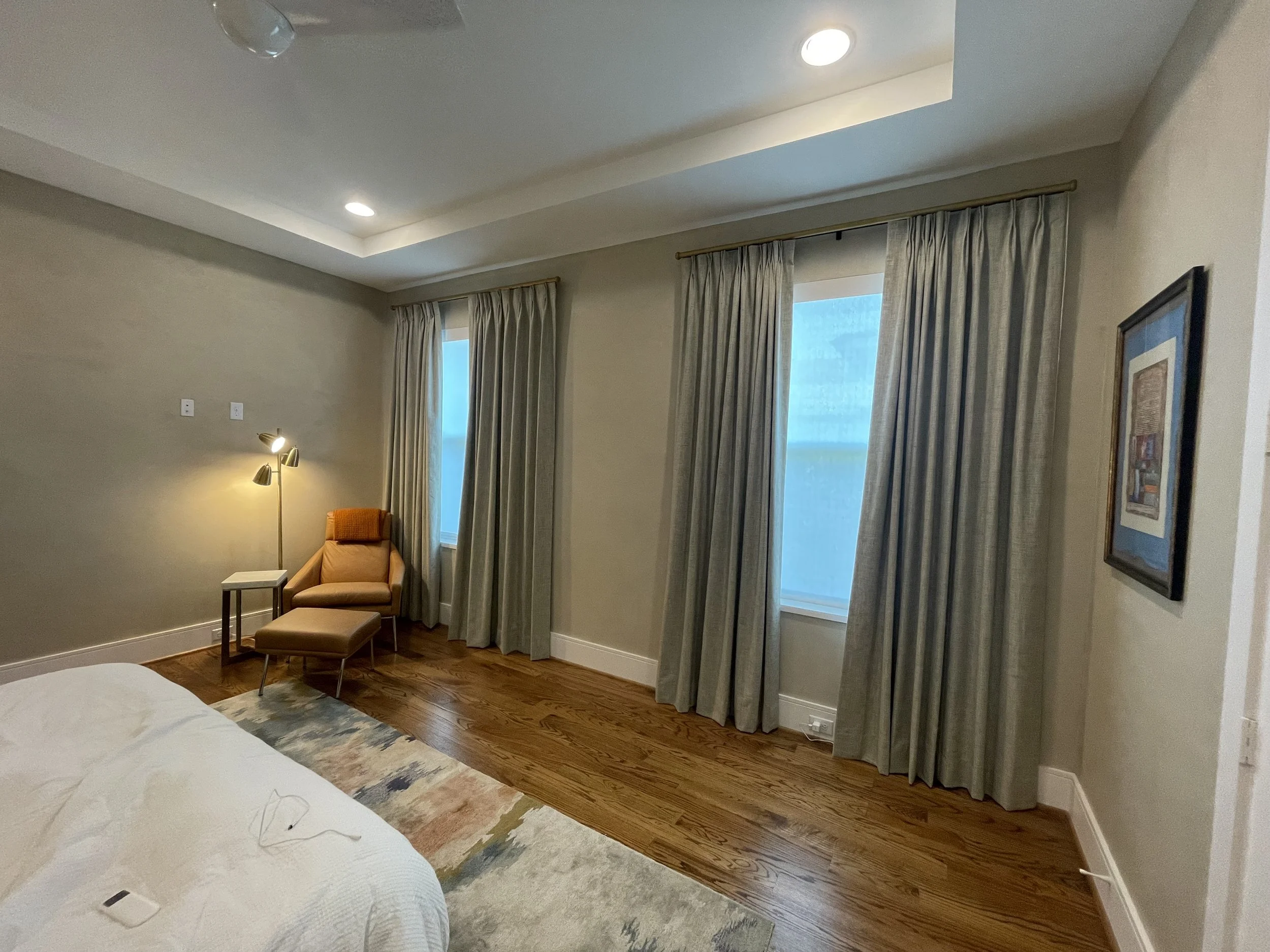Drapery Design Secrets
How Drapery Proportions and Fabric Styles Define Your Space
Elevated Drapery Design
Professional Tips-
Length, Fabric Weight & Fullness
When it comes to drapery, proportions aren’t just a detail—they’re the foundation of a polished, intentional space. From how high you hang your rod to the amount of fabric pooling (or not pooling) at the floor, every inch plays a part in the overall aesthetic and function of your window treatments. One of the most commonly overlooked—but crucial—elements is how close your drapery hangs to the floor, and how much fullness your fabric has based on its weight and structure.
Dual Rod with Operable Gray darkening drapes over white sheers
Why Drapery Should Float 1” Above the Floor
Having your drapery hem hover just 1” inch above the floor strikes the perfect balance between clean lines and efficient operation. It’s enough clearance to prevent dragging, fraying, or collecting dust—but still gives the illusion of drapery that’s tailored, intentional, and high-end.
Unlike drapes that puddle or stop short, this “floating hem” technique:
Keeps the fabric looking crisp and fresh
Allows for easy vacuuming and cleaning underneath
Prevents buckling or bending when drapes are opened and closed
Works beautifully in both formal and casual spaces
Incorrect Panel Height
In short? Floating your fabric is a design detail that says, I know what I’m doing.
Fullness: More Than Just Extra Fabric
Decorative Single width Pinch Pleat Panels in Living Area
Fullness refers to how much extra fabric is used to create pleats, waves, or gathers. It’s what gives drapery that rich, layered, dimensional look—and it needs to be tailored to the weight and texture of the fabric you’re using.
Double width pinch panels in Dining Area
Lightweight Fabrics (Sheers, Linens)
Ceiling Mounted Sheer Drapes
These need more fullness—typically 2.5x to 3x the width of the window—to avoid looking flat or skimpy. Because they’re airy and flowy, they benefit from generous gathering to showcase their movement and depth.
Medium to Heavyweight Fabrics (Velvets, Jacquards)
Pinch Pleat Drapery in L shaped Gold Metal Drapery Rod
These hold their shape well and require less fullness—often 2x to 2.5x the window width. Too much can make the window feel crowded or bulky, especially if your hardware or space is limited.
Style Meets Function
Pairing the correct length and fullness with the right fabric is where the magic happens. For example:
A structured cotton with pinch pleats and 2x fullness gives a classic, tailored look.
A soft sheer on a ripplefold track with 3x fullness creates a breezy, modern feel.
A velvet drape floating just above the floor with Euro pleats adds luxury without being overwhelming.
Final Thought: Details Define the Space
Drapery isn’t just about covering a window—it’s about defining the character of the room. Getting the proportions right ensures that the drapery doesn’t just fit, it enhances. From the 1” float to the perfect fullness for your fabric, every detail contributes to a finished space that feels balanced, intentional, and beautifully styled.
Sheer Drapery behind Tub

